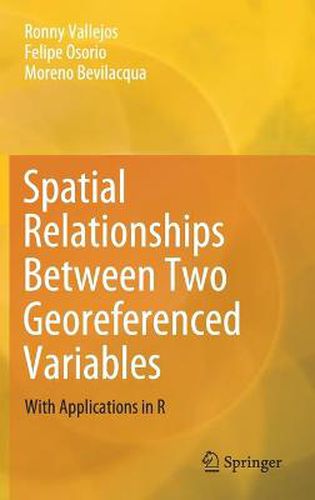Readings Newsletter
Become a Readings Member to make your shopping experience even easier.
Sign in or sign up for free!
You’re not far away from qualifying for FREE standard shipping within Australia
You’ve qualified for FREE standard shipping within Australia
The cart is loading…






This title is printed to order. This book may have been self-published. If so, we cannot guarantee the quality of the content. In the main most books will have gone through the editing process however some may not. We therefore suggest that you be aware of this before ordering this book. If in doubt check either the author or publisher’s details as we are unable to accept any returns unless they are faulty. Please contact us if you have any questions.
This book offers essential, systematic information on the assessment of the spatial association between two processes from a statistical standpoint. Divided into eight chapters, the book begins with preliminary concepts, mainly concerning spatial statistics. The following seven chapters focus on the methodologies needed to assess the correlation between two or more processes; from theory introduced 35 years ago, to techniques that have only recently been published. Furthermore, each chapter contains a section on R computations to explore how the methodology works with real data. References and a list of exercises are included at the end of each chapter.
The assessment of the correlation between two spatial processes has been tackled from several different perspectives in a variety of applications fields. In particular, the problem of testing for the existence of spatial association between two georeferenced variables is relevant for posterior modeling and inference. One evident application in this context is the quantification of the spatial correlation between two images (processes defined on a rectangular grid in a two-dimensional space). From a statistical perspective, this problem can be handled via hypothesis testing, or by using extensions of the correlation coefficient. In an image-processing framework, these extensions can also be used to define similarity indices between images.
$9.00 standard shipping within Australia
FREE standard shipping within Australia for orders over $100.00
Express & International shipping calculated at checkout
This title is printed to order. This book may have been self-published. If so, we cannot guarantee the quality of the content. In the main most books will have gone through the editing process however some may not. We therefore suggest that you be aware of this before ordering this book. If in doubt check either the author or publisher’s details as we are unable to accept any returns unless they are faulty. Please contact us if you have any questions.
This book offers essential, systematic information on the assessment of the spatial association between two processes from a statistical standpoint. Divided into eight chapters, the book begins with preliminary concepts, mainly concerning spatial statistics. The following seven chapters focus on the methodologies needed to assess the correlation between two or more processes; from theory introduced 35 years ago, to techniques that have only recently been published. Furthermore, each chapter contains a section on R computations to explore how the methodology works with real data. References and a list of exercises are included at the end of each chapter.
The assessment of the correlation between two spatial processes has been tackled from several different perspectives in a variety of applications fields. In particular, the problem of testing for the existence of spatial association between two georeferenced variables is relevant for posterior modeling and inference. One evident application in this context is the quantification of the spatial correlation between two images (processes defined on a rectangular grid in a two-dimensional space). From a statistical perspective, this problem can be handled via hypothesis testing, or by using extensions of the correlation coefficient. In an image-processing framework, these extensions can also be used to define similarity indices between images.